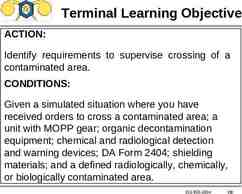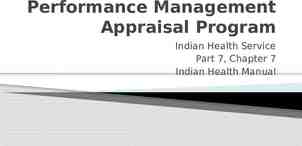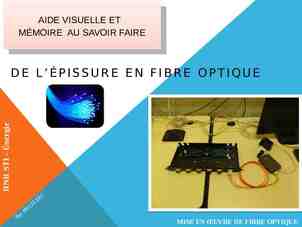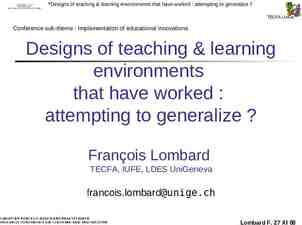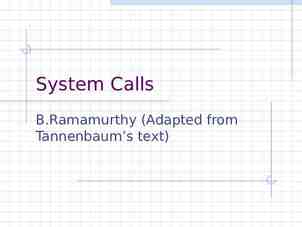Providing Career and Mental Assistance to a Diverse Population: Using
52 Slides5.76 MB

Providing Career and Mental Assistance to a Diverse Population: Using Theory to Inform Practice Janet Lenz, Ph.D. Robert Reardon, Ph.D. Debra Osborn, Ph.D. Florida State University IAEVG 2012 Mannheim, Germany

FSU “Tech Center” Focus on the connection between career and mental health issues in the context of theory, research, and practice

Career, Work, and Mental Health Individuals seeking career counseling often present a complex array of issues Difficult for counselors to separate career satisfaction and development from other mental health issues Zunker, V. (2008). Career, work, and mental health. Thousand Oaks, CA: Sage.

Career and Mental Health Issues are Inextricable in Many Cases Linda is depressed because she has not done well in high school and she has been very discouraged about her options after she graduates. Is this a career problem or a depression problem? Alberto is worried about getting into medical school. He is not sleeping well at night and has become upset because his family and girlfriend are putting pressure on him. Is this a career problem or a relationship problem? Fred returns home after work each day with high stress; he suffers verbal abuse from a punitive supervisor, is experiencing anxiety attacks, and high blood pressure. Is this a career, mental health, or medical problem? (Adapted from Krumboltz, 1993)

FSU Career Center Mission Provide comprehensive career services Train career service practitioners Conduct life/career development research Disseminate information about life/career services and issues to the university community, the nation, and the world.

Organizational factors to consider in combining career and mental health assistance: The institution Institutional culture, policies, & procedures Administrative structure Space Records Tools & resources

Factors to consider in combining career and mental health assistance: Staffing, training, & supervision Professional identity Staff credentials Supervision & training Liability Specializations

Staff PhDs on site for training & supervision Access to students enrolled in in counseling, counseling psychology, career counseling programs Training materials

Synthesis of three career services dimensions: client needs, intervention complexity, staff competencies A. Level of Client Needs C. B. Level of Career Intervention Complexity Level of Competencies and Skills of Counselors and Staff Source: Sampson, J. P., Jr., Reardon, R. C., Peterson, G. W., & Lenz, J. G. (2004). Career counseling and services: A cognitive information processing approach. Pacific Grove, CA: Brooks/Cole.

Case Example: FSU Career Center Key elements: mission theory base staff credentials & expertise existence of accredited counseling programs at Master’s & PhD level nature of training provided to paraprofessionals

Career theory connected to practice Holland’s RIASEC theory and secondary constructs Use of cognitive information processing (CIP) theory Connection to other counseling theories (e.g., Beck)

Holland’s RIASEC Theory Impact of personality characteristics on life/career issues Connection of secondary constructs (e.g., congruence, differentiation, profile elevation, vocational identity) to mental health factors

CIP Pyramid Domains Thinking about my decision making Knowing how I make decisions CASVE Cycle Knowing about myself Knowing about my options Client Version

CASVE Cycle Knowing I Need to Make a Choice Knowing I Made a Good Choice Execution Implementing My Choice Valuing Choosing An Occupation, Program of Study, or Job Communication Understanding Myself and My Options Expanding and Narrowing My List of Options Analysis Synthesis

Executive Processing Domain Metacognitions—Thinking about decision making – Self-talk – Self-awareness – Control and monitoring

Assessment of Readiness Two Issues: Capability Complexity

Readiness The capability of an individual to make appropriate career choices taking into account the complexity of family, social, economic, and organizational factors that influence career development Readiness also includes possessing adequate language skills and literacy skills for communication and learning Source: Sampson, J. P., Jr., Reardon, R. C., Peterson, G. W., & Lenz, J. G. (2004). Career counseling and services: A cognitive information processing approach. Pacific Grove, CA: Brooks/Cole.

Capability The cognitive and affective capacity to engage in effective career choice behaviors How are my career choices influenced by the way I think and feel?

Factors inhibiting capability Disabling emotions Dysfunctional career thoughts Goal instability Tension or urgency to make a decision Self concept as a decision maker

Complexity Contextual factors, originating in the family, society, the economy, or employing organizations, that make it more (or less) difficult to make career choices How does the world around me influence my career choices?

Factors contributing to complexity Personal conflict Number of personal, social, occupational issues Financial Family Relationships Quality of life

Levels of Service Delivery Self-Help Services Brief Staff-Assisted Services Individual CaseManaged Services 22

CIP Readiness Model Complexity (high) Low readiness High degree of degree support needed (Individual CaseManaged Services) Capability (low) Moderate readiness Moderate to low of support needed (Brief Staff-Assisted Services) (high) Moderate readiness High readiness Moderate to low degree of support needed (Brief Staff-Assisted Services) No support needed (Self-Help Mode)

Levels of Readiness Assessment Direct behavioral observations Career decision state Low-cost, theory-based assessments Psychological mental health appraisals Peterson, G. W., Lenz, J. G., & Bullock-Yowell, E. (2012, June). ) Assessing and enhancing readiness for career decision making: Findings and implications from recent research. Presentation at the National Career Development Association Global Conference, Atlanta, GA.

Intake Behavioral Observations: “no options interest me” “my teacher, parents, partner told me to come here” Irregular speech patterns— slow/fast/broken Not making sense, confusion

Career Decision State Possible assessment tools: – Occupational Alternatives Q. (OAQ) – Career Tension Scale (CTS) – Goal Instability Scale (GIS)

Occupational Alternatives Questionnaire (OAQ) Measures career decision state: – degree of certainty pertaining to a career choice – satisfaction with current choice – assesses clarity of occupational aspirations – content indicates level of maturity and level of occupational knowledge

OAQ Scoring the OAQ: 1 2 3 4 1st choice, no alternatives alternatives and a 1st choice alternatives, no 1st choice neither alternatives, nor 1st choice Note: this is an ordinal scale

Correlates of OAQ Decision-Making Confusion (DMC) r .33 Commitment Anxiety (CA) r .25 CTI Total r .22 Beck Depression r .19 No choice moderate depression Walker & Peterson (in press) Journal of Career Assessment

Career Tension Scale (CTS) A measure of career stress or urgency to make a decision Reed, C. (2006). The relationships among neuroticism, dysfunctional career thoughts, and coping strategies.

Correlates of CTS NEO Neuroticism r .44 DMC r .37 CA r .28 EC r .36 OAQ r -.04 Bullock-Yowell, et al. (2011). Relationships among career and life stress, negative career thoughts, and career decision state: A cognitive information processing perspective. The Career Development Quarterly, 59, 302-314.

Goal Instability Scale (GIS; Robbins & Patton, 1985) Measures lack of focus, low drive and energy, confusion about self Bertoch, S. et al. (submitted). Goal instability in relation to career thoughts, decision state, and performance in a career course. Journal of Career Development.

Career Theory-Based Assessments Examples: Career Thoughts Inventory (CTI; capability) Decision Space Worksheet (DSW; complexity) Self-Directed Search (SDS; capability) Secondary constructs as window into mental health issues (e.g., low differentiation)

What is the CTI? Self-administered Objectively scored 48-Item measure of dysfunctional thoughts in career choice

Theoretical Basis of the CTI Cognitive Information Processing (CIP) Theory Beck’s Cognitive Theory

The CTI in Needs Assessment Identifying the specific nature of negative thoughts Three CTI Construct Scales Decision-making Confusion (DMC) Commitment Anxiety (CA) External Conflict (EC) Specific career interventions can be related to specific construct scores

Mental health constructs directly correlated with dysfunctional career thoughts indecision neuroticism anxiety angry hostility depression hopelessness impulsivity vulnerability For additional information visit: www.career.fsu.edu/techcenter

Assessing the personal and social context Decision Space Worksheet (DSW) A measure of complexity Peterson, G. W., Leasure, K. K., Carr, D. L. & Lenz, J. G. (2010). The Decision Space Worksheet: An assessment of context in career decision making. Career Planning and Adult Development Journal, 25, 87-100.

Decision Space Worksheet Page 1: list elements Page 2: draw circles within a given circle in proportion to the importance of an element

Decision Space Worksheet (DSW)

Purpose of the Decision Space Worksheet (DSW) Cognitive mapping task Helps clients reveal thoughts, feelings, persons, circumstances associated with career decision Helps clients prioritize importance of contextual influences Can be used with middle school through college level students and adults

Typical Issues Revealed Cognitive distortion Disabling emotions Financial Family Education Interests Self doubt Employment Quality of life

Correlates of DSW Beck Depression Inventory CTI CA .19 CTI EC -.18 .21 DSW is basically unrelated to measures of capability Solomon, J. L. (2011). The Decision Space Worksheet, the Career Thoughts Inventory, and the Beck Depression Inventory-II as measures of mental health in the career decision-making process. The Florida State University. ProQuest Dissertations and Theses.

Assessments for Psychological/ Mental Health Appraisal Examples: Beck Depression Inventory (BDI) Useful as a mental health screener Item 9 concerns suicide ideation Beck Hopelessness Scale (BHS) Useful as a mental health screener, especially for depressed individuals or those at risk for suicide Example item: “My future seems dark to me.”

Assessments for Psychological/ Mental Health Appraisal (continued) MMPI-2 in Career Counseling – Assesses personal and social adjustment – Measures clinical syndromes that may interfere with or block effective decision making – Used following screening measures such as CTI, DSW, and interview

The Case of George 37 year old Cuban-American with a high school degree Sought assistance in finding a new job that would have more meaning Formerly employed in the construction industry Experienced dysfunctional family situation Lack of social support Previous counseling for depression

George’s CTI Total Score T 78 Decision-Making Confusion (DMC) T 80 External Conflict (EC) T 74 Commitment Anxiety (CA) T 77

George’s DSW

George’s ILP

George’s Counseling Outcomes Identified areas of concern beyond the presenting career decision Formulated counseling goals and activities that integrated career and mental health issues Improved his quality of life related to career goals and social relationships

Summary Clear support in the literature for integrating these areas Important to consider organizational and programmatic issues Implementation requires attention to staff resources, internal & external factors Theoretical perspectives used in the setting may guide decisions about addressing career and mental health issues Assessment tools influence extent to which these factors might be considered and addressed in the counseling process

For More Information www.career.fsu.edu/techcenter


